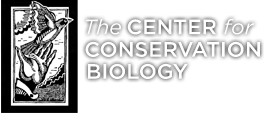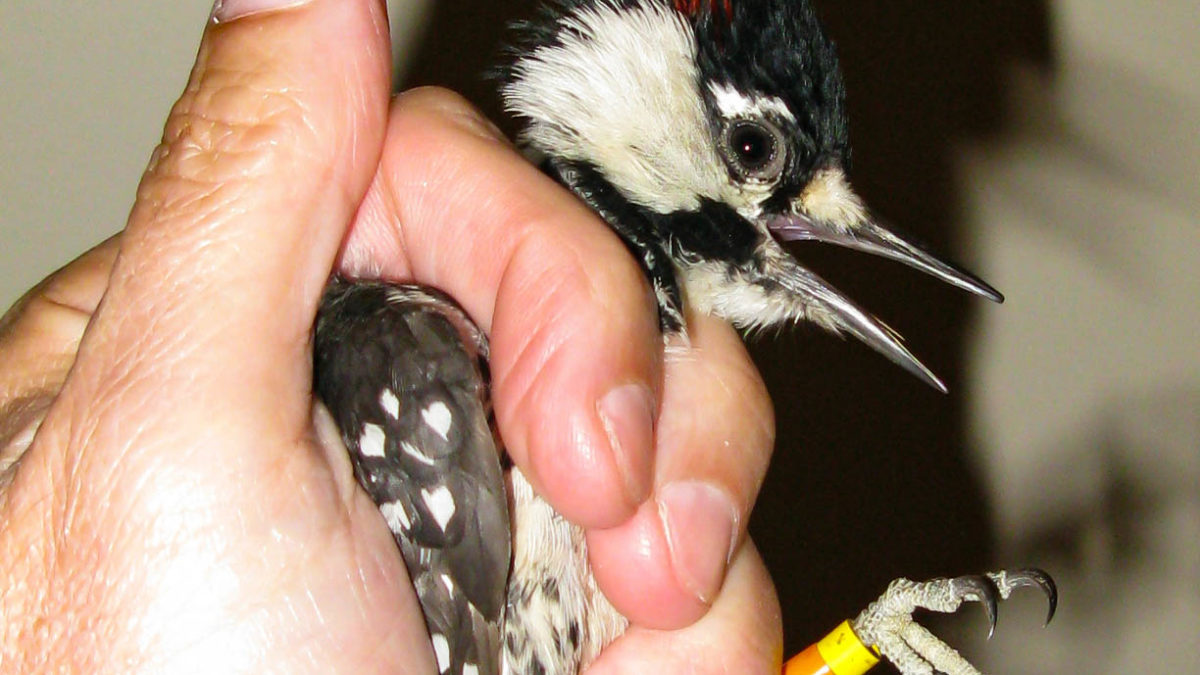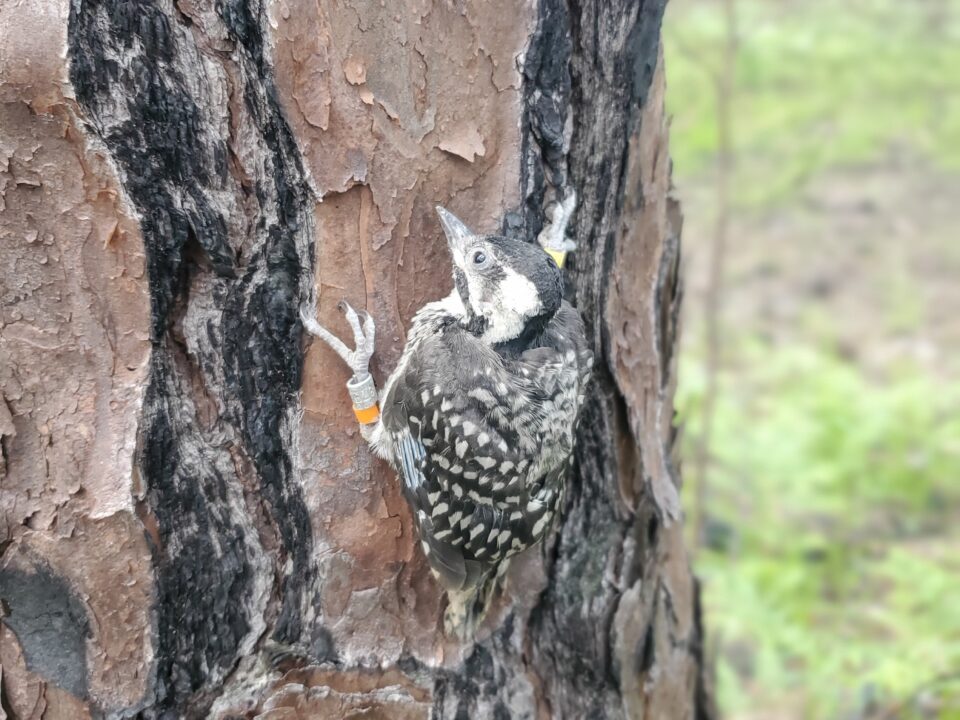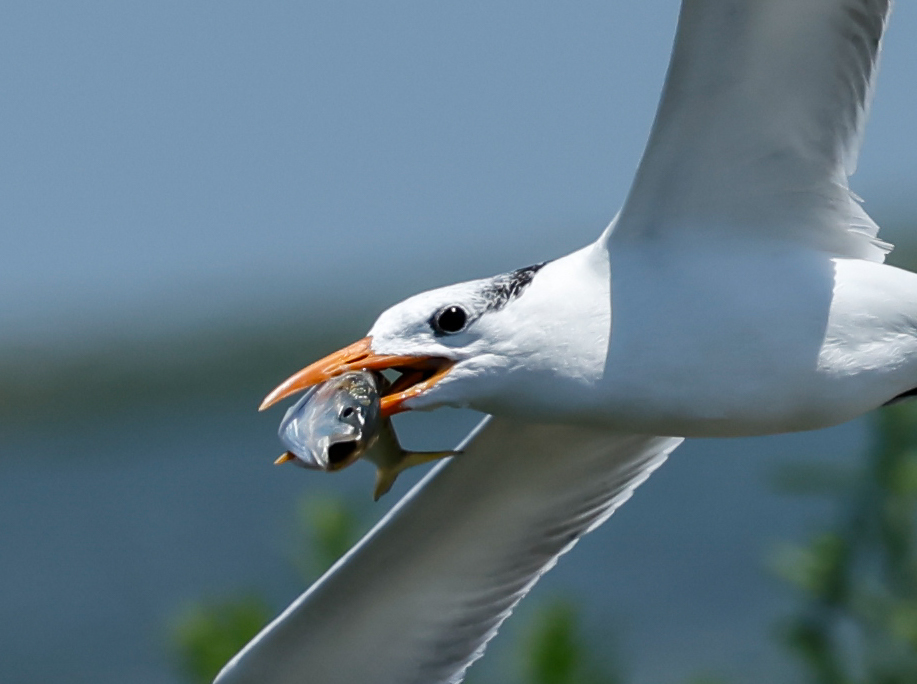Moving Woodpeckers 5

Counting Cormorants
January 23, 2020
Social distancing in birds
April 1, 2020By Bryan Watts
1/26/2020
Chance Hines and I arrived in cluster 13 of Piney Grove Preserve more than an hour before sunset. We knew the roost cavity for the target male and had decided on stakeout positions, measured the cavity height, practiced raising the pole net into position, and cleared brush for a lane to lay the 40-foot pole. We were now in full stakeout position, with Chance only ten feet from the roost cavity and me a long distance away with a spotting scope leaning up against a tree. The silence was finally broken by birds giving flight calls from the west and then four woodpeckers torpedoing into the cluster of cavity trees. The birds suspected nothing, but finished their final foraging of the day and then entered their roost cavities one by one. We gave the male time to settle in and then it was show time. Chance stalked over to the base of the tree and slowly raised the net toward the cavity. We froze as the male briefly peered out of the cavity, but as he resettled Chance was able to maneuver the net over the entrance. After a few long seconds the male shot out of the cavity and fluttered down to the bottom of the net. We placed the male in a transport box and then headed over to check on the other capture team of Bart Paxton, Laura Duval, and Bobby Clontz. By the time we arrived, they had their man, ending a perfect capture night. High fives were had all around as we packed up the gear and headed toward the swamp to place birds for the night. This was the second translocation of 2019. Earlier on 10 October, a much larger crew had captured two males and two females on Carolina Sandhills National Wildlife Refuge.

2019 was the fifth consecutive year that CCB and a multi-state, multi-agency coalition rallied to capture red-cockaded woodpeckers from source populations in the Carolinas and Virginia for reintroduction within the Great Dismal Swamp National Wildlife Refuge. The objective continues to be the establishment of a second viable breeding population in Virginia. As with all of the past translocations, a large number of man days was required during the late summer and early fall to identify candidate birds along with their backups and backups to backups. The team also needed to identify roost trees so that the birds could be captured and then roost them again for confirmation during the run-up to movement night.
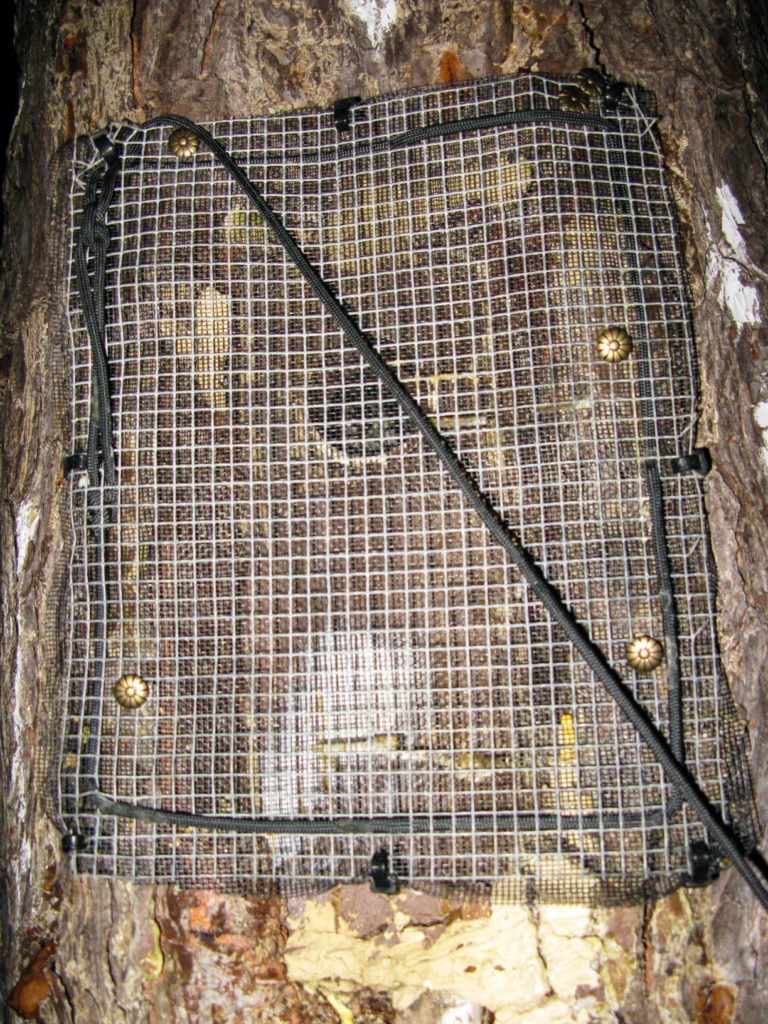
In 2019, six hatch-year woodpeckers including four males and two females were moved during two nights. Four birds were moved from Carolina Sandhills National Wildlife Refuge in South Carolina on 10 October and two birds were moved from Piney Grove Preserve in Virginia on 17 October. All birds were placed in artificial cavities and released the following morning at dawn. All birds emerged in good condition and interacted with other woodpeckers. In all, 42 woodpeckers have been meticulously monitored, captured, transported, and ultimately released from artificial cavities within the refuge since 2015. All birds have been released successfully.
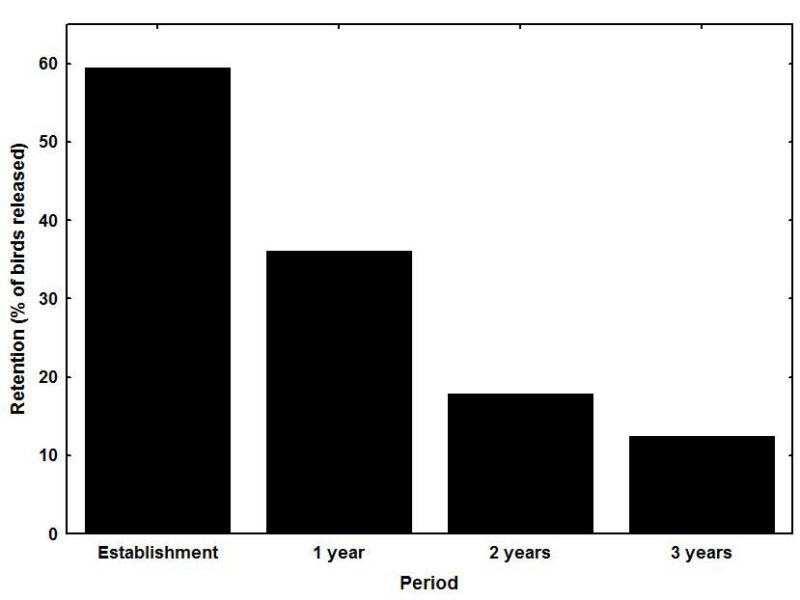
Retention Rates
Over five years (2015-2019) with a broad coalition of biologists we have executed ten operations and successfully moved and introduced 42 birds into the Great Dismal Swamp. Twenty-five (59.5%) of these birds became established and were detected during winter head counts. Seventeen of the birds did not establish and were never observed after release. Of the birds released, 36.1% were present after one year and 17.9% were present after two years. Since the initial releases in 2015, birds have made four breeding attempts during four breeding seasons.
